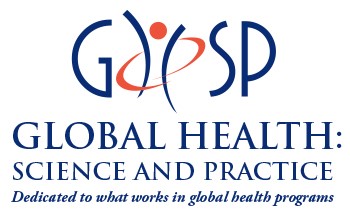Latest Articles
- Using Human-Centered Design to Explore Potential Users' and Men's Views of New Injectable Contraceptives in Kampala and Lagos
Although residents of Lagos and Kampala are interested in injectable contraception that lasts either 4 or 6 months, they have concerns as well.
- Barriers and Facilitators to Implementing the National Patient Safety Implementation Framework in Public Health Facilities in Tamil Nadu: A Qualitative Study
The study findings identified numerous implementation challenges that will make it difficult to fully implement the National Patient Safety Implementation Framework in public health facilities in Tamil Nadu by 2025.
- Lessons Learned in Improving the Quality of a Free Reproductive Health Hotline in Benin
Benin's Ligne Verte reproductive health hotline is filling information gaps and linking callers to services while getting regular feedback from its users to improve the service provided.
- Rehabilitation Practices Delivered by Physical and Occupational Therapists to Brazilian Children With Congenital Zika Syndrome: A Cross-Sectional Study
This study highlighted that professional training and knowledge translation strategies are needed to implement evidence-based practices and improve the quality of physical and occupational therapy programs for Brazilian children with congenital Zika syndrome.
- A Supervision Framework for Task-Shared Mental Health Workers: Implications for Clinical Trials and Beyond
The authors describe a supervision model that integrates elements of clinical supervision into categories that are suitable for use in task-shared trauma interventions in low-resource settings.
- Harmonizing Data Visualizations on Child Health and Well-Being to Strengthen Advocacy and Monitoring Efforts
Data visualization tools on child health have improved data accessibility but caused confusion over indicator data sources and which tools to use for specific purposes. We propose principles for generating future tools that can effectively trigger action and accountability for children everywhere.
- Another Best Practice: Leveraging User and Stakeholder Perspectives to Improve and Refine Existing Medical Products
Refinement of existing medical products, which may already have an established evidence base, robust market, and experienced users, may better meet user and potential user needs, if feedback from key stakeholders is solicited and incorporated early in the refinement process.
- Do No Harm: A Review of Social Harms Associated with HIV Partner Notification
This narrative review provides an in-depth interpretation of the limited evidence available on social harms associated with HIV partner notification services. Findings reflect knowledge gaps and areas where future research could make contributions.
- Keeping the Customer Satisfied: Applying a Kano Model to Improve Vaccine Promotion in the Philippines
The authors show how global health science and practice can benefit from applying approaches established in other fields, such as consumer psychology and quality management, to increase clients' satisfaction with health interventions.
- Service Delivery Considerations for Introducing New Injectable Contraceptives Lasting 4 and 6 Months in Nigeria and Uganda: A Qualitative Study
Family planning stakeholders in Nigeria and Uganda are interested in expanding the range of injectable contraceptives offered in their countries, and their engagement will be key to ensuring the successful introduction and scale-up of these new products.

